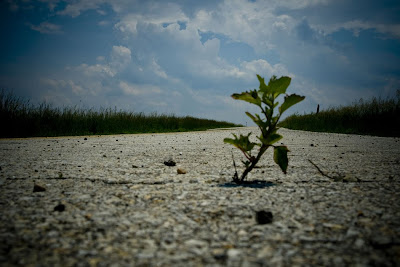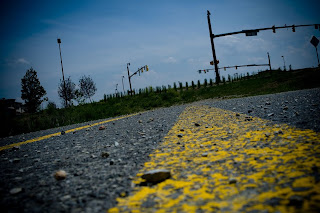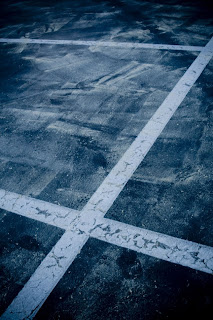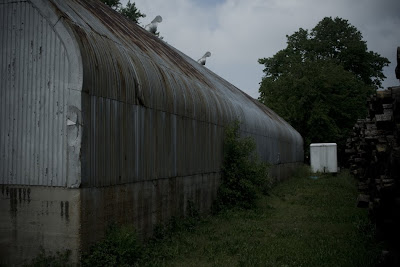
I first heard of Bill Anderson recently when I happened to read a short news item in the newspaper about how Bill was offering to donate a few hours one day in September, at the Noblesville Public Library, to take free headshot portraits of people who were strapped by the recession but looking for work and wanting to spruce up their resumes with a classy photograph. Bill said the one-day shoot went well -- so well that the library welcomed him back to do a
 nother session Oct. 26 at the Fishers branch of the library system.
nother session Oct. 26 at the Fishers branch of the library system.
Bill does on-location fine art personal portraits, and while he is based in Fishers, he serves all of Central Indianaincluding Indianapolis. He's a native of Indianapolis, a 1983 Warren Central High School graduate and has worked professionally in the Indianapolis area since 1993 and has photographed thousands of portrait clients and some commercial clients and donated time and talents to a number of charities.
Bill, when and how did you get into photography, and can you describe how you and your photography has evolved over time?I have been interested in photography since I was maybe twelve or so. I remember using my parent’s camera to snap a picture of my sister-in-law and nephew. She was holding him in her lap and he was resting his face on her shoulder. I remember being impressed with the soft lighting and how it conveyed this loving moment. From there, I took a photography class at Warren Central, in the Walker Career Center. The teacher loved my work, but kicked me out for not doing enough of it!
Ten years or so passed before I thought about pursuing photography seriously. I had a friend whose dad had a complete color darkroom he wanted to sell. My camera at that time was a Pentax Spotmatic 35mm SLR. I learned most of the processes from a book called “Photography" by Phil Davis. The darkroom also came with a stack of books covering every aspect of film photography known to man at that time. All I had to do was jump in there and apply myself.
The “seeing” part of photography came naturally to me, I only had to learn the mechanics. With a few successful rolls of images under my belt, I decided it was time to hang out my shingle and start taking portrait jobs. I could understand the quiet beauty of a woman or a mother with her children, so that is the space I stayed in most of the time. I have a very deliberate approach to these types of shoots that is relaxed and quiet. I don’t shoot as well under pressure and my subjects must be calm for me to get the correct emotion from them as well.
This is how things were for the better part of 14 years. I ha

d a family to take care of, so I had a full-time job and sometimes worked an extra part-time job to keep up with the bills. Equipment purchases were few and far between, though by then I had managed to work up to a Nikon F4 (it was the best you could get at the time). While I was busy with other things, digital had crept in and subtly taken over every aspect of photography like cancer! Like a lot of shooters, I was skeptical and told my clients film was still yielding the best results and that may have been true for 10 minutes or so. It was 1995 before I decided to finally start buying my music on CDs. You just don’t want to be too “reactionary” with new technology!
I am completely converted to digital. I am trying to remember what it was like to take a bunch of pictures for someone, cash their check and then find out if you did a good job for them or not. The ability to instantly see your images and experiment with your camera settings on the fly has caused a tremendous improvement all around. Once I got immersed in the digital way of doing things, my art progressed rapidly with this new set of tools.
Your Web site indicates you've been working in the Indianapolis area since 1993. (Following is to be included if it's not addressed in your response above ) Where did you work before that? Are you from Indiana?I was born and raised on the Eastside of Indianapolis. I lived in the neighborhood between 30th and 38th streets and Shadeland Avenue and I-465. I went to Warren Central High School, graduating in the class of ’83.
 How do you feel about the craft's transition into the digital era? Do you favor it over film, or vice versa? Do you still do much work in film?
How do you feel about the craft's transition into the digital era? Do you favor it over film, or vice versa? Do you still do much work in film?As I mentioned earlier, I was very skeptical for a long time. Part of that was budget driven. I had to be sure that I was sure before I could make a big financial leap. Like any new technology, it is very, very expensive at the beginning. I decided to wait for the prices to come down a bit and, while I was waiting, I would watch to see if it was really going to catch on or not.
I know there is a purist contingent that regards film images to have a certain character that digital images don’t. I also know how many hours one is likely to spend in a darkroom getting the print to really jump off the paper at you, not to mention the ever rising expense of chemicals, paper and film, all of which expire before you can effectively use them (at least that is my experience).
At this point, the effort required to generate an acceptable image from film compared to that of digital is cost prohibitive and, I think ludicrous. The whole world has ADD. We need images faster and faster. If I hear about an explosion downtown, do I want to see what happened tomorrow morning? Do I have the patience to wait fo

r the evening news? No. I have to jump on the Internet and see it now. During the Gulf War, we didn’t have to wait for the news to trickle in, we got to watch it, almost in real time. We didn’t hear about the attacks on the World Trade Center Towers; we all watched it and experienced it for ourselves.
Having said all of that, my Nikon F4 is carefully packed away, and my darkroom has been packed into boxes. The practical part of me says "get rid of it" while another part wonders if this could be an elite niche that I could provide when necessary.
What kind of equipment do you use? Do you have a favorite lens?I am doing everything with a Nikon D300. I primarily use one of two lenses, a 28-80mm and a 70-200mm. I find they are sufficiently versatile for most of what I do.
How interested are you about getting involved with a lot of work with post-processing software -- "photoshopping" -- to alter the appearance, or "look," of an image?Photoshop is the new darkroom. You have to go in there and manipulate your images somehow. I don’t see any way to avoid it. In the darkroom, there were a ton of manipulations going on to make a good print, and I don’t see any difference from that and using Photoshop to compensate for exposure, contrast or anything else.
I don’t think my Photoshop skills will ever exceed my skills with a camera. I have to get 98% of it right in the camera if it is going to work at all.
Your Web site contains some interesting, essaylike prose about your take on the current state of professional photography -- the inclusion of it, for example, as a secondary or tertiary service in a much larger operation such as Wal-Mart. I've wondered about this myself on occasion. Do you have a sense of how something like this is received by colleagues in the profession? Do you think the feeling is more c'est le vie than bitterness?I think most people accept that things change. The best thing to do is evaluate the change, adjust your game

plan and carry on. I have made a shift over to commercial photography. Most of the price/quality erosion is taking place in retail portrait photography. You just have to spend some time educating your client on the differences between what you offer and what everyone else can offer. Those big operations have to churn out tons of product to get their prices as low as they are. Consequently, they don’t have time to create anything spectacular. You, as an individual, have much lower overhead expenses. You need every shoot to succeed in your client’s eyes, and you are personally devastated when they don’t. You will take the time to get it right. You need their word-of-mouth to promote your growth.
Do you agree with the observations of photography purists who advise that a professional or avid hobbyist should select, develop and stick with one specialty or type of photography -- portraiture or weddings, for example -- instead of trying to do a lot of everything? Does that figure into your approach to the kinds of jobs you accept?I think weddings are a specialty. To do them right, you have to build a whole marketing machine around weddings. You have to have a full understanding of where the market is with albums, DVD packaging and be very adept at selling clients on those types of products. To command the best fees for your services, the marketplace needs to see you as a wedding photographer, to the point that they wouldn’t think to call you for anything else You are too busy with all the weddings.
I have never included weddings in my marketing, though I was open to the idea of doing them because it is decent money. In my career, I have probably done 20 weddings. I don’t feel enough excitement about them to make it my full time occupation, so I will leave them to others who are more qualified to make a living out of shooting them.
There are diverse subject matter that I find interesting, and I would get bored if I could only shoot one of them. I would not want to make a living out of only shooting flowers, or only shooting cars, etc. I find that I need an active mix to keep me actively involved. If you get too specialized, your work will get formulaic and stale quickly. My example with weddings works because there are several different aspects to wedding photography. The engagement session, the reportage of wedding day preparations, the formals, the ceremony itself and documenting the party afterward is an exhausting mix to cram into one Saturday! Then there is the whole other side of presenting the images for the clients.
 Do you have a favorite type of photography? Do you have any favorite photographers, contemporary or otherwise, who have inspired or motivated you or been responsible for you pursuing any of the ideas or techniques you've used?
Do you have a favorite type of photography? Do you have any favorite photographers, contemporary or otherwise, who have inspired or motivated you or been responsible for you pursuing any of the ideas or techniques you've used?For a long time, I have loved the work of people like Robert Frank, Robert Freeman, Edward Weston and I am sure there are others. As I have been cramming to catch up in the digital arena, I have been following people like Chase Jarvis, David Hobby and Joe McNally. They are putting out a lot of great information on technique that has helped me catch up quickly.
You recently launched a blog at which, upon launch, you aspired to upload at least one fresh photograph per week. How is that going? Are you enjoying the outlet to combine text with your images? Well, a quick glance at the archive list will tell you I haven’t kept up the pace with my blog that I aspired to in the beginning. Sometimes, I am too busy, but mostly I like to have something to say that will warrant the attention of someone slowing down enough to read it. I am still working on developing that discipline to be a consistent blogger.
I have heard that you should send out a minimum of two Twitter

updates a day. I am nowhere near that number, but then again I don’t think it is relevant to tell people how glad I am that Friday is here or how bad I feel on Mondays. There is a lot of static being pushed out through Twitter and Facebook updates, so I want to have something relevant to add to the discussion. It probably keeps me from saying as much as I should.
I see from your gallery at your Web site that you've tackled some large group shots. Are there any quick tips you could share with other photographers on the best way of dealing with such large groups (positioning them, keeping them attentive, etc.) -- other than using a wide-angle lens, of course.A large group is going to require you to be at a high vantage point, so a sturdy ladder or a balcony, if it is convenient, is the way to go. Beyond that you have to grab everyone’s attention while you are shooting. This is not the time to be fooling with your camera or light positioning. You have to get set up ahead of time and get all of that worked out beforehand.
An assistant is crucial for your setup. You will not be able to hold their attention for more than 2 minutes max, so you have to be patient with them, but urgent about getting them into position. Explain as clearly as you can what you want from them as you are getting them into position and keep talking as you shoot to keep them engaged and from talking to each other. Fire off about twenty frames or so and let them go. For some reason, people act like you are holding them underwater when you are trying to organize a large group like that.
In light of the prolonged economic downturn and the sharp increase in unemployment, you donated your services in September to job-seekers wishing to supplement their resumes with a current, professional headshot. You scheduled a session at the Noblesville library for such people to show up and take their pictures (OK to include a link here to the online mug shot images?).. Now I see you're offering to do it again in Fishers on Oct. 26. How did the first session go? What kind of reaction did you get from the community? The community’s res

ponse to this project has been very positive. The folks at the Noblesville Library were delighted to accommodate my first event and were equally eager to allow me a second event at their Fishers Branch. I sent out a press release, and just about everyone published it. I was asked to come on Fox59 Morning News and talk about what I am doing, so everyone is being very supportive.
My first event saw 20 people come get their portraits done, and the second event is coming up in a few days. I believe I will have more people show up this time. I am hoping to at least double the previous turnout.
Do you sense there is a lot of unseen, unknown or simply untapped ways -- at least for now -- that all skilled photographers could give back to the community in this or other ways? Have you ever considered how photographers -- as a group -- could help or make a social or community difference?I think in any given crisis, we can all find some way of contributing to a solution or of alleviating someone’s plight. Photographers are in a unique position to help because we are communicators We are marketers, we are illustrators and documentarians. We can put a tangible image in someone’s mind to make real the news stories we hear every day. We can visually illustrate abstract ideas to make them comprehensible to a larger audience.
Have you ever had any of your work published or displayed in galleries? If so, where? If not, do you have any interest in getting such an opportunity?Yes. I did an exhibit at The Children’s Art Gallery in the Carmel Arts and Design District last year, and I did a commissioned set of images for White River Christian Church earlier this year that was received very well. I think it is great to be able to be there and get people's reactions and impressions of your work on the spot like that. It is very interesting to hear how they interpret what you have done.

Click on the links below to see more of Bill Anderson's work and check out his blog:
Bill Anderson's Web siteBill Anderson's Blog
 After a couple days of rain, Thursday afternoon came, and no precipitation. I thought I could squeeze in the shoot I had put off for more than two weeks. As I got all my gear together, something didn't seem quite right. Even when I stepped outside to load the car, something seemed amiss.
After a couple days of rain, Thursday afternoon came, and no precipitation. I thought I could squeeze in the shoot I had put off for more than two weeks. As I got all my gear together, something didn't seem quite right. Even when I stepped outside to load the car, something seemed amiss.

 debar story on the broccoli plants (a floret from which I include here): Usually, gardeners, if they want to grow broccoli as much as possible, have to rely on two plantings per growing season -- one in spring, another in fall. The brutal, sustained summer sun and heat (usually 85 degrees or more) kills off the spring planting at some point.
debar story on the broccoli plants (a floret from which I include here): Usually, gardeners, if they want to grow broccoli as much as possible, have to rely on two plantings per growing season -- one in spring, another in fall. The brutal, sustained summer sun and heat (usually 85 degrees or more) kills off the spring planting at some point.














































